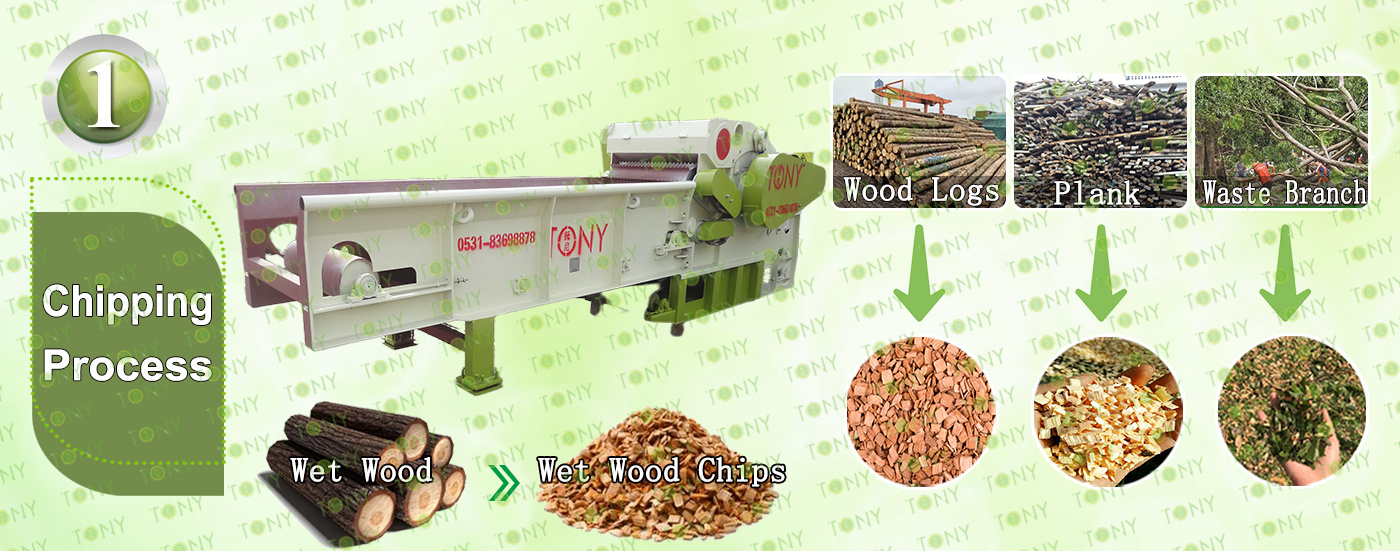In the production chain of biomass pellets, "efficient granulation" not only depends on the molding performance of the pellet machine, but also depends on the "pretreatment quality" of the front-end crushing link. As the core equipment for converting raw agricultural and forestry waste into qualified granulation raw materials, the comprehensive crusher provides an irreplaceable core guarantee for the efficient operation, energy consumption control and pellet quality of the subsequent granulation link through precise crushing, homogenization and adaptive transformation of materials. It can be called the "first lifeline" of the granulation production line.
1. Solve the complexity of materials: provide "standardized raw materials" for granulation
The physical properties of agricultural and forestry waste vary greatly: straw (long fiber, strong toughness), wood chips (blocky, uneven hardness), branches (thick, high lignin content), rice husks (lightweight, fluffy) and other materials have different shapes, hardness, and fiber structures. If they enter the pelletizer directly, it will cause problems such as uneven feeding, stuck materials, and difficult molding, which seriously restricts the efficiency of pelleting.
The core value of the integrated crusher is first reflected in the "compatibility processing" of complex materials:
Multi-material adaptability: Through blade configuration (such as hammer type, shear type, impact type combination) and speed control, it can process a variety of raw materials such as straw, wood chips, branches, vines, etc. at the same time, without the need for batch crushing, reducing the process connection time;

Forced crushing ability: For hard materials (such as branches and wood blocks), they are crushed into 3-5cm coarse materials through shearing and impact of high-strength alloy blades; for flexible materials (such as straw and weeds), the fiber structure is broken through kneading crushing to avoid entanglement and blockage;
Pretreatment integration: Some comprehensive crushers integrate preliminary screening functions, which can remove impurities such as stones and metals in the materials, avoid subsequent damage to the pellet machine mold, and reduce pelleting failures from the source.
This "one-stop standardized processing" of complex materials ensures the uniform form of raw materials entering the pelletizing link, laying the foundation for continuous and stable feeding of the pellet machine.
2. Precisely control particle size: reduce pelletizing energy consumption and improve molding efficiency
The molding efficiency of the pellet mill is closely related to the particle size of the raw materials: uneven particle size will cause uneven force on the material in the ring die, resulting in "die jamming" and "particle breaking" phenomena; excessive particle size (such as greater than 8mm) will increase the wear of the roller and the ring die, resulting in a surge in energy consumption; while too fine particle size (such as less than 1mm) will increase the problem of poor air permeability of the material and affect the molding density.
The advantages of this precise crushing are:
Reducing the extrusion resistance of the pellet machine roller and the ring die, reducing unit energy consumption (saving 15%-20% energy compared to raw materials with uneven coarse crushing);
The material has a uniform heating area, which can soften lignin more fully (playing a bonding role) during the pelletizing process, and improve the pellet forming rate (up to more than 95%, while coarse crushed raw materials are only 70%-80%);
Raw materials with uniform particle size have better fluidity, avoiding "bridge" blockage of the pellet mill feed port and improving continuous operation time.
3. Linked production line: ensuring "efficient coordination" in the granulation process
Efficient granulation is not a "lonely battle" of a single device, but the result of the coordination of the entire production line. The integrated crusher ensures seamless connection between the front and back links through "capacity matching" and "intelligent linkage":





















